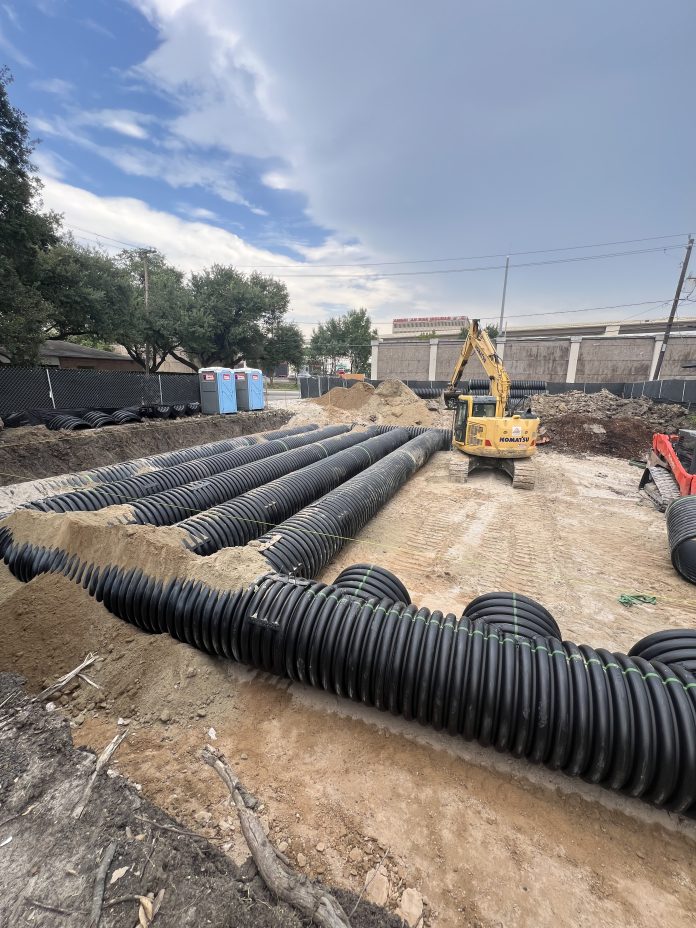An underground detention system is a subsurface facility designed to temporarily hold stormwater runoff and release it at a managed rate. These systems aim to reduce the effects of increased stormwater runoff caused by new constructions, especially in cities where space is limited. By capturing and gradually discharging water, they help to prevent floods, minimize erosion, and ensure flow rates match those before development.
How it operates
Collection: Water runoff from surfaces that do not absorb water, such as roofs and parking lots, is funneled into the underground system through catch basins or manholes.
Storage: The water is then held temporarily in underground storage areas, such as chambers, vaults, or pipes.
Release: An outlet pipe, built to allow a specific flow rate, gradually returns the stored water back into the drainage system or natural water bodies, making sure that the water flow after development is the same as it was before.
Benefits
Space Efficiency: Underground systems play a vital role in cities where land is limited and costly, enabling development without losing important surface area for managing stormwater.
Flood Control: By controlling how stormwater is released, these systems lower the chances of flooding during and after rainstorms.
Erosion Prevention: Managing the flow rate of runoff helps lessen the erosion that occurs due to fast-moving water.
Environmental Compliance: Underground systems can be created to comply with certain water quality standards and laws, ensuring that runoff is treated prior to being discharged.
Aesthetic Advantages: Unlike above-ground ponds, underground systems do not take up valuable land and help avoid potential visual and maintenance concerns.
Common Components and Materials
Concrete Vaults: Strong and long-lasting, concrete vaults provide an effective solution for underground water storage.
Corrugated Metal Pipes (CMP): Used for transporting and storing water, CMP systems are a budget-friendly choice.
Modular Plastic Chambers: Lightweight and simple to set up, plastic chambers offer a versatile option for different site conditions.
R-Tank®: A modular underground storage solution that provides high storage efficiency and can be utilized for detention, retention, or harvesting rainwater.
UrbanPond®: A modular precast concrete system that mimics the performance of open detention ponds, allowing for flexibility in size and depth.


